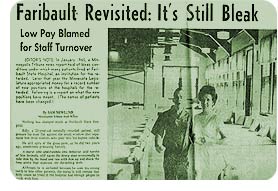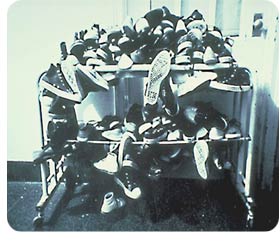By now, day programs had become a major focus for comprehensive services in all counties throughout the state. In March of 1967, the state Arc organization issued a positive report outlining the remarkable progress made by individuals with developmental disabilities participating in day programs.
This progress cost the state just 60 cents per hour for each participant, considerably less than traditional residential care.
In 1967, the U.S. Public Health Service awarded Hennepin County a $150,000 grant to fund day programs for three years. Meanwhile, mental health centers in Minnesota were given added duties, including responsibility for planning day programs for local citizens with developmental disabilities.

The Arc Report illustrated how day programs have helped people with developmental disabilities make significant progress at a low cost.
Despite this progress, the state Legislature approved nearly 2,000 new positions for state hospitals in 1966. Again, the media played a role in initiating change.
Sam Newlund, whose 1965 exposé in the Minneapolis Tribune uncovered serious deficiencies in the state hospital system, re-visited the topic in 1967. The follow-up series reported that, even with the new staffing levels, staff turnover rates at Faribault was 100 percent. Aides could not live on the low pay and many had to work double shifts.
Overall, turnover in the state hospital system was 35.7%.

A 1967 expose revisited an earlier series only to find that little had changed.
Newlund, from the Minneapolis Tribune, did have some positive progress to report. By 1967, half of the men living in institutions wore shoes, largely because of staff efforts.

Positive progress:
Half of male residents wore shoes by 1967.






